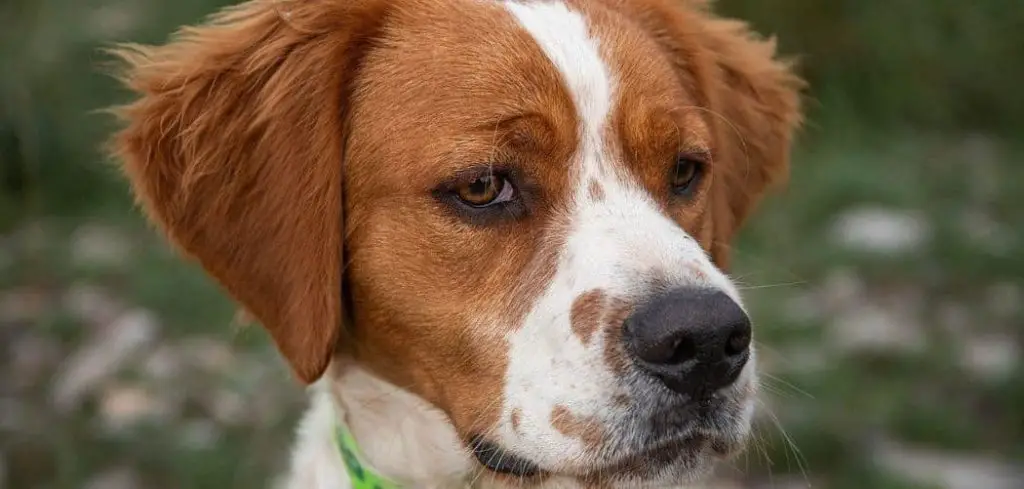Seeing your dog lethargic not eating and drooling excessively is definitely cause for concern.
While each of these symptoms on its own might be harmless for a short time, when they appear together, they may indicate a more serious health problem.
Drooling is often a response to nausea, oral pain, or toxin exposure—and when paired with fatigue and appetite loss, it may mean your dog needs urgent care.
We outline what might be behind these symptoms, what to do at home, and when you should call the vet.
Dog Lethargic Not Eating and Drooling: Why It Happens
When your dog is lethargic not eating and drooling, possible causes include nausea, dental disease, oral injury, foreign object ingestion, toxin exposure, heatstroke, or even liver and kidney issues.
These symptoms typically indicate that your dog is feeling unwell or in discomfort. Sometimes it’s as simple as an upset stomach, but other times it could signal something more serious like poisoning or organ failure.

Dog Lethargic Not Eating and Drooling: Common Causes
Nausea or Gastrointestinal Upset
One of the most common causes of drooling and appetite loss in dogs is nausea.
Just like humans, dogs can feel queasy for many reasons—eating something spoiled, a sudden diet change, motion sickness, or gastrointestinal inflammation.
A nauseous dog may:
Lick their lips frequently
Salivate or drool
Walk slowly or lie down more than usual
Turn away from food and water
If your dog is also lethargic, it could mean the upset stomach is affecting their entire system.
Watch for vomiting, diarrhea, or abdominal bloating, which may point to a larger GI issue.
Dental Pain or Oral Injury
Dental disease is a leading cause of drooling in dogs—especially in older dogs.
Gum infections, tooth abscesses, broken teeth, or oral tumors can make eating painful, which leads to lethargy and refusal to eat.
Signs of dental trouble include:
Foul-smelling breath
Pawing at the mouth
Blood in saliva
Sensitivity when chewing or yawning
If your dog avoids dry food or shows signs of oral discomfort, it’s time for a vet check.
Most dental conditions are treatable, and managing pain is essential for overall well-being.
Related: My dog is lethargic and not eating (Causes and when to worry)
Foreign Object in the Mouth or Throat
Dogs are curious and love to chew, but sometimes they bite off more than they can handle—literally.
If a piece of stick, bone, or toy becomes lodged in the mouth or throat, it can cause intense drooling, gagging, and refusal to eat. This often leads to visible distress and fatigue.
Try inspecting the inside of your dog’s mouth carefully, but only if it’s safe to do so.
Do not attempt to remove any object stuck in the throat. Seek emergency vet care if you suspect a blockage or choking hazard.
Toxin Ingestion
Excessive drooling, sudden lethargy, and refusal to eat may be the first warning signs of poisoning. Dogs may accidentally ingest:
Toxic plants (like lilies or sago palms)
Household chemicals
Human medications
Chocolate, grapes, or xylitol-containing products
Other signs of poisoning can include vomiting, shaking, diarrhea, or seizures.
If you suspect toxin exposure, don’t wait—call your vet or a pet poison hotline immediately.
Heatstroke or Overheating
On hot days or after strenuous activity, dogs can suffer from heat exhaustion or heatstroke, both of which are medical emergencies.
Drooling is an early symptom, followed by lethargy, refusal to eat, excessive panting, and possible collapse.
This condition can escalate quickly. If your dog is overheating:
Move them to a cool area immediately
Offer small sips of water
Place cool (not cold) wet towels on their body
Still, veterinary attention is essential even if symptoms begin to improve.
Liver or Kidney Disease
Chronic conditions like liver or kidney dysfunction often lead to fatigue, appetite changes, and increased drooling due to nausea or toxin buildup in the bloodstream.
These diseases develop gradually but may present suddenly when symptoms become severe.
Older dogs are especially at risk. If your dog has been drinking more water lately, losing weight, or having accidents in the house, these could be additional clues.
Blood tests and a full physical exam are needed for diagnosis and treatment planning.
What to Do If Your Dog Is Lethargic Not Eating and Drooling
If your dog shows these symptoms, here are practical steps to take at home:
Check for visible injuries – Gently inspect the mouth for sores, broken teeth, or lodged objects.
Remove access to potential toxins – Secure cleaning products, plants, and human food items.
Offer water or ice cubes – If they refuse, monitor hydration levels closely.
Try bland food – If your dog shows interest, offer plain chicken and rice.
Let them rest in a calm environment – Stress can worsen symptoms, so give them space to recover.
Document what time symptoms started and note any possible exposures or changes in routine.
This information will help your vet make a faster, more accurate diagnosis.
When to Call or Visit Your Vet
Get veterinary help immediately if your dog:
Refuses food or water for more than 24 hours
Shows signs of vomiting, diarrhea, or seizures
Has blood in saliva or around the mouth
Appears disoriented, weak, or collapses
Was possibly exposed to toxins or harmful substances
Even if your dog seems to improve, underlying issues like dental disease or organ dysfunction need professional care to prevent recurrence or complications.
Related: My dog is drooling and lethargic (Here’s why)
Key Takeaway
Drooling paired with lethargy and appetite loss is never a symptom combo to ignore.
While it may be something as manageable as mild nausea or stress, it can also point to more urgent issues like poisoning, dental pain, or heatstroke.
You know your dog best—so if something feels off, trust your instincts and call your vet.
Prompt attention and supportive care can make all the difference in helping your dog feel like themselves again.
